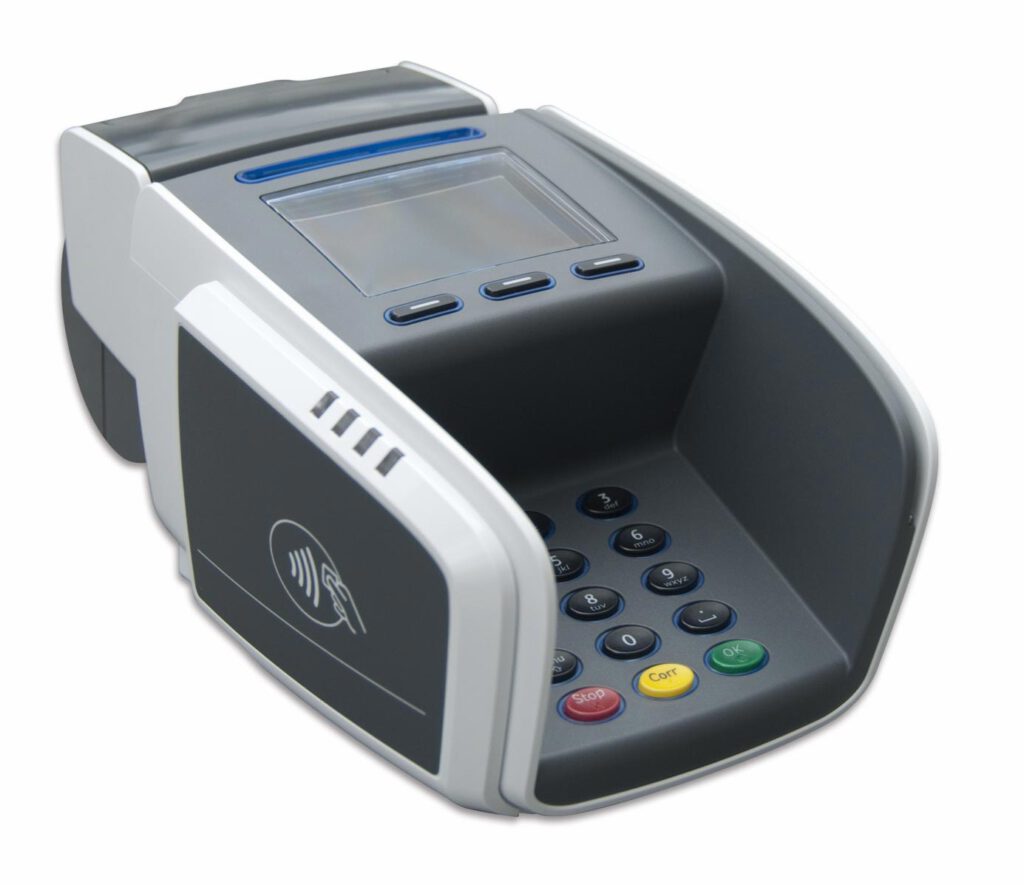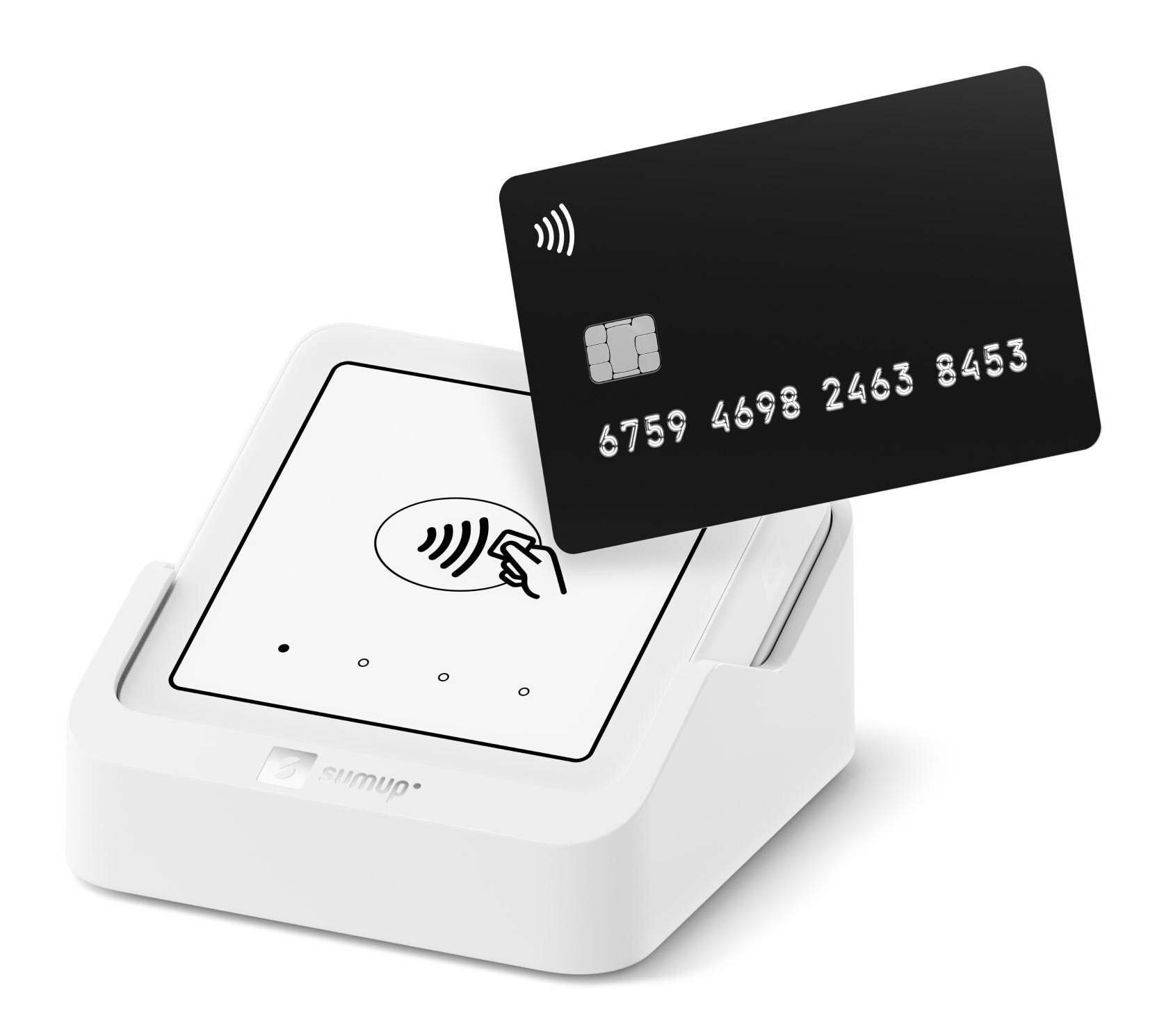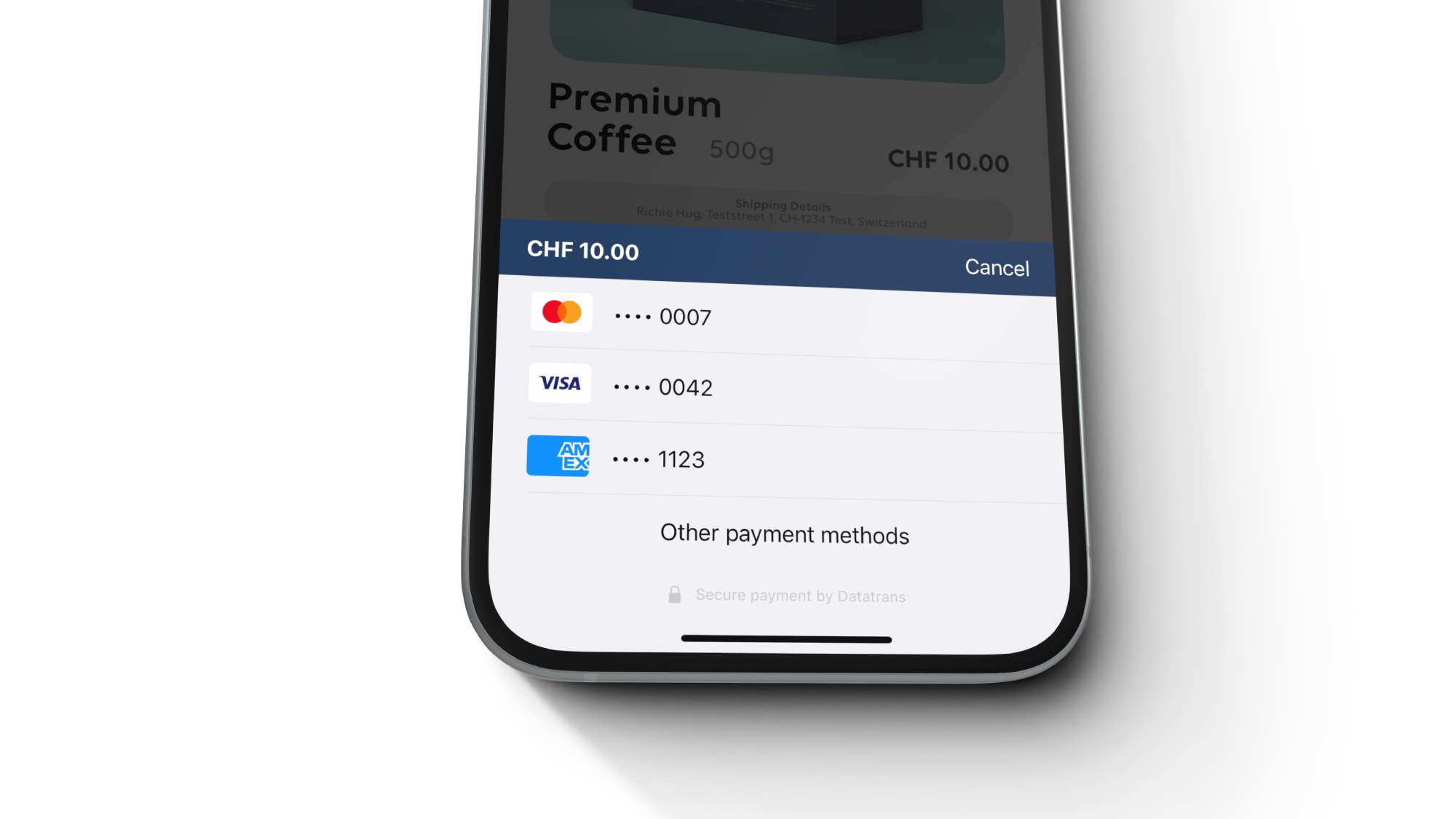Point‑of‑Sale (POS) vs E‑Commerce (ECOM)
Almost every payment can be placed into one of two categories: in-person or remote. In the payments world, we call these Point-of-Sale (POS) and E-Commerce (ECOM). Both aim to do the same thing — move money from the customer to the merchant — but they live in very different worlds. One is tangible, full of terminals, receipts, and real people. The other is digital, built from APIs, encryption, and invisible code.
While POS payments depend on physical terminals, secure chips, and low-latency networks that need to be rock solid, E-Commerce operates in a far more fluid environment where browsers, APIs, and web standards define the rules. Let's explore how they differ, and what makes each one tick.
POS (Card-Present)
Point-of-Sale, or Card-Present (CP), covers any situation where the buyer and seller are physically together — and the card isn't being processed through a website or app. You insert a card, tap your phone, or flash your watch, and the payment feels instant. Behind that effortless motion, though, is an orchestra of certifications, encryption keys, and network messages whirring in milliseconds to confirm that yes, your latte really is paid for.
Hardware here is as diverse as the merchants themselves. Retailers rely on countertop terminals that stay tethered to a till. Restaurants favor Wi-Fi or Bluetooth-enabled devices they can bring to your table. Delivery drivers and service technicians use mobile POS units paired with smartphones. Some terminals include integrated printers; others have none, leaving receipts to be emailed or printed elsewhere. Even within one brand, models vary wildly — from sleek touchscreens to clunky keypads that look like they were designed in a different century.
Then there's SoftPOS, the industry's latest push toward minimalism. It lets merchants accept contactless payments directly on Android phones — no extra hardware at all. Tap-to-Pay on iPhone takes the same idea into Apple's ecosystem. The result: fewer cables, fewer terminals, and one step closer to payment experiences that just happen.
For larger environments like hotels, restaurants, or retail chains, integrated POS systems tie payments into the broader business. These connect to inventory, loyalty programs, and reservation systems so that when a waiter adds dessert or a guest charges a drink to their room, the payment data lands in the right ledger automatically.
Unattended setups — vending machines, EV chargers, parking stations — operate almost autonomously. They authenticate cards locally, communicate periodically with the acquirer, and are designed to survive extreme conditions, both environmental and human.
Behind the Terminals
Merchants rarely think about it, but every terminal belongs to an invisible ecosystem called a TMS — Terminal Management System. The TMS keeps the entire estate alive: pushing software updates, security patches, parameter files, logos, and acquirer configurations to thousands of devices remotely. It can reboot, block, or reassign terminals without anyone touching the hardware. Without it, large merchants would drown in manual updates every time a scheme changed a setting or a new firmware was required.
Globally, a few manufacturers dominate the POS world: Worldline (Ingenico), Verifone, and PAX hold most of the market. You'll find their devices everywhere — from Zurich to Zanzibar — often branded with the merchant's acquirer logo. Ingenico's classic terminals have practically become part of the modern shopping aesthetic: the tiny monochrome screens, the faintly squeaky buttons, the universally dreaded red cross for "DECLINED". Every consumer has seen it. Few have escaped it.

By contrast, newer entrants like SumUp, Square, or Zettle have reimagined what a terminal can look like — minimalist white blocks with barely any buttons, almost brutalist in their simplicity. They're small enough to fit in your pocket, Bluetooth-connected, and designed for merchants who care about appearance as much as acceptance. If the Worldline (Ingenico) terminal is a PC, the SumUp is the iPhone Air.

One can only hope POS design catches up with the rest of consumer tech. Terminals have been the same grey boxes for decades; they deserve a little beauty. They should look like they belong in the present.
E-Commerce (Card-Not-Present)
E-Commerce, often called Card-Not-Present (CNP), happens when the buyer and seller aren't in the same place. It includes online shopping, in-app payments, subscriptions, and even paying invoices through a web portal. If you're typing, tapping, or clicking to pay — that's E-Commerce.
Payment choice in this space has exploded. Cards like Visa, Mastercard, and Amex still dominate globally, but digital wallets such as PayPal, Apple Pay, and Google Pay have transformed checkout into a two-tap experience. Local payment methods have also taken center stage: iDEAL in the Netherlands, Sofort in Germany, Bancontact in Belgium, Pix in Brazil, and Twint in Switzerland. In Europe, Open Banking and account-to-account rails are growing fast, while in the Nordics or DACH region, invoicing and pay-later options remain cultural staples.

Because there's no physical card or chip to verify, E-Commerce faces a constant tension between convenience and security. Every online transaction is a risk evaluation happening in milliseconds: Does this look like the real cardholder? CVV codes, 3D Secure, device fingerprinting, and AI-driven fraud scoring all play a role in that silent decision.
To keep things running smoothly, networks introduced network tokens and account updater services so that stored cards remain valid even when they're replaced or reissued — tiny behind-the-scenes improvements that can lift approval rates by several percent.
MOTO (Mail Order / Telephone Order)
Before online payments became mainstream, Mail Order / Telephone Order (MOTO) was the original form of remote commerce. Customers shared their card details by phone or post, and merchants keyed them in manually through a terminal or virtual POS interface. It's a Card-Not-Present (CNP) transaction type — no chip, no contactless, and no customer physically present — but still a crucial fallback for certain industries.
Hotels, airlines, car rentals, and call centers continue to rely on MOTO for scenarios where digital payment links or online checkouts aren't practical. Because the cardholder isn't present, MOTO transactions carry higher fraud risk and typically fall outside 3D Secure and Strong Customer Authentication (SCA) requirements. Acquirers therefore apply stricter risk monitoring and higher interchange or processing fees.
Technically, MOTO is handled through the same acquiring infrastructure as E-Commerce — the merchant simply submits a "MOTO indicator" in the authorization message to tell the acquirer and issuer that the card data was entered manually. It's a small flag, but it changes how the transaction is evaluated, authenticated, and protected.
Interestingly, some E-Commerce transactions are still technically processed under MOTO setups, especially in legacy or mixed merchant environments. This happens when merchants or PSPs use older MOTO merchant contracts to process online payments, often as a workaround to bypass 3D Secure, which isn't applicable to MOTO transactions. While this approach can simplify flows and improve conversion, it comes with trade-offs: no liability shift, higher fraud exposure, and potential non-compliance with regional authentication mandates like PSD2. It's a reminder that not all "online" payments are built on modern rails — some still run through the quiet back channels of yesterday's commerce.
Typical E-Commerce Integrations Available to Merchants
Modern E-Commerce platforms give merchants several ways to present payments to their customers — each balancing speed, security, and control a little differently. During my years at Datatrans, I helped shape exactly this layer: the connective tissue between merchant experience and technical reliability.
Hosted Payment Pages are the simplest path. The customer is redirected to a secure, PSP-hosted checkout page to complete payment, then automatically sent back to the merchant's site. It's the fastest and safest to integrate — ideal for getting live quickly or offloading PCI scope. Some providers offer a hosted solution and an overlay mode: the former opens a separate page, the latter overlays the form on top of the merchant's site so the user never feels like they left.

Secure iframes are the integration for merchants who want to keep the payment form inside their own website, secure iframes provide a hybrid option. The card fields are technically hosted by the PSP, but they appear seamlessly within the merchant's design. It looks native, but sensitive data never touches the merchant's servers, keeping them PCI compliant. This approach demands more developer effort but gives full branding control — perfect for mature digital teams who care about experience.

And finally, another example would be Mobile SDKs for iOS and Android: As mobile commerce now dominates traffic, PSPs provide native SDKs to embed payments directly into apps. These handle everything from displaying payment method UIs to processing authorizations behind the scenes. They also support a growing list of payment methods — cards, wallets, or local options — without merchants having to build each flow manually. It's one of the fastest-growing integration trends, especially now that platform restrictions like Apple's in-app payment rules are loosening.

In every case, the principle is the same: let merchants choose between speed of setup, level of control, and depth of integration.
The Language of Payments — Protocols
Behind every tap and click lies a conversation between machines. Payment systems speak in protocols — standardized message formats that allow banks, terminals, and networks to understand each other.
The most famous is ISO 8583, the backbone of card transactions worldwide. It defines every field in an authorization request: card number, amount, currency, terminal ID, response code — all packed into structured bitmaps that have changed little since the 1980s.
In Europe, many POS terminals (& even online gateways!) speak EP2, a Swiss-born protocol designed to simplify certification across acquirers and devices. And in the broader banking world, a newer generation of standards like ISO 20022 is emerging — richer, XML-based, and meant to unify payments, clearing, and reporting under one global format.
It's not glamorous, but these protocols are the reason a card issued in Mexico can pay for coffee in Zürich. Without them, every transaction would be a translation problem.
The Constant Challenge: Staying Current
One of the biggest challenges for both E-Commerce and POS is keeping everything up to date. Payments run on countless standards and protocols, all of which evolve continuously. Regulations like PSD2 in Europe and security standards such as PCI DSS require regular updates and audits. The underlying technologies also move quickly: new encryption algorithms, updated EMV contactless kernels, changes in authentication flows like 3D Secure 2, or the shift from older ISO 8583 message formats to ISO 20022.
Adding new payment methods is another constant task. To grow internationally, merchants often need to support regional payment schemes — Twint in Switzerland, BLIK in Poland, PIX in Brazil, or UPI in India. Each comes with its own message formats, currencies, and operational quirks. Even within existing card systems, new data fields are introduced to make payments faster and more secure, such as card-on-file indicators and network tokens that improve approval rates for recurring or stored-credential payments.
What may seem like a simple tap or click on the surface hides a world of invisible coordination and constant evolution. Staying compliant, secure, and competitive means continuously adapting to new technologies, rules, and customer expectations. E-Commerce and POS are two sides of the same coin. One exists entirely in the digital realm, the other in the physical world. Yet both share the same objective: to make paying effortless, secure, and reliable. Understanding how each channel works — and how quickly both are evolving — is essential for anyone who wants to understand the real engine behind modern commerce.
